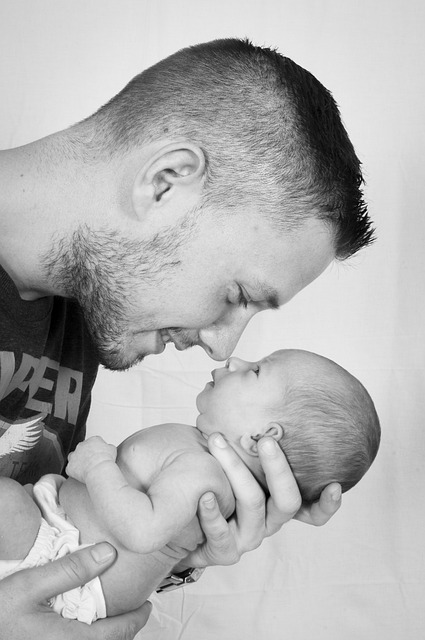Oregon's Department of Human Services (DHS) safeguards vulnerable children through a robust legal framework in DHS child welfare cases. This involves detailed procedures from intake to resolution, focusing on family reunification or alternative placements while adhering to due process rights and cultural competency. Reporting suspected abuse or neglect initiates the process, followed by investigations and comprehensive risk assessments. Court involvement ensures fairness and well-being, with placement matching children's needs to suitable homes. Post-case management focuses on reunification and stability for long-term success.
“Oregon’s child welfare system, guided by the Oregon Department of Human Services (DHS), navigates complex legal procedures to ensure the safety and well-being of children. This comprehensive guide delves into the intricate aspects of DHS child welfare cases, from reporting suspected abuse or neglect to post-case management. Understanding these legal processes is pivotal for parents, fostering a clear framework that protects rights while prioritizing child safety. By exploring initiation, investigations, court involvement, placement, and follow-up care, this article illuminates the journey within Oregon’s child welfare legal procedures.”
- DHS Child Welfare Cases: Overview of Legal Framework
- Initiating a Case: Reporting Suspected Abuse or Neglect
- Investigations and Assessments: Understanding the Process
- Court Involvement: Rights and Proceedings for Parents
- Placement Decisions: Temporary Care to Permanent Solutions
- Post-Case Management: Reunification and Ongoing Support
DHS Child Welfare Cases: Overview of Legal Framework

In Oregon, the Department of Human Services (DHS) plays a pivotal role in protecting and nurturing vulnerable children within its jurisdiction. DHS child welfare cases are governed by a robust legal framework designed to ensure the safety, well-being, and rights of both children and families involved. This framework includes comprehensive procedures for intake, investigation, removal, case management, and eventual resolution, all aimed at either reunifying families or finding suitable alternative placements for the child’s long-term welfare.
Key aspects of this legal framework involve strict adherence to due process, where all parties have the right to legal representation, notice of proceedings, and an opportunity to be heard. Additionally, Oregon law emphasizes the importance of cultural competency, ensuring that DHS approaches cases with sensitivity towards diverse family structures, traditions, and needs. This holistic approach strives to create a supportive environment while navigating complex legal procedures for the ultimate benefit of the child.
Initiating a Case: Reporting Suspected Abuse or Neglect

In Oregon, initiating a child welfare case begins with reporting suspected abuse or neglect. Individuals who have reasonable cause to believe that a child is experiencing harm should contact the Department of Human Services (DHS) Child Welfare Division. This can be done by calling the DHS 24-hour hotline at 1-855-567-0327, where trained professionals assess the situation and determine the next steps.
Reports can also be filed online through the DHS website or in person at a local DHS office. Once a report is received, a child welfare worker will conduct an investigation to gather information and evidence regarding the alleged abuse or neglect. This process involves interviews with family members, caregivers, and other relevant individuals, as well as a review of the child’s living conditions and medical records.
Investigations and Assessments: Understanding the Process

In Oregon, when a concern for a child’s safety arises, the Department of Human Services (DHS) is tasked with conducting thorough investigations and assessments to determine the best course of action for the child’s welfare. This process involves a series of steps designed to protect the rights and interests of both the child and their family while ensuring the child’s safety. DHS social workers will first gather information from various sources, including parents or guardians, other family members, educators, and healthcare providers. This initial phase aims to gain a comprehensive understanding of the situation before making any decisions.
After gathering this information, DHS conducts a thorough assessment to evaluate the risk factors and potential dangers within the home environment. This includes observing the living conditions, interviewing family members, and reviewing relevant historical data. The assessment helps in determining whether the child is at immediate risk and if removal from the home is necessary. The entire process prioritizes the child’s safety and well-being while offering support and resources to families involved in DHS child welfare cases.
Court Involvement: Rights and Proceedings for Parents

In Oregon, when a child is deemed at risk or abused, DHS (Department of Human Services) child welfare cases often lead to court involvement. Parents in such situations have specific rights and are entitled to due process. The legal proceedings aim to ensure fairness while safeguarding the child’s well-being. The court plays a crucial role in reviewing evidence, hearing arguments from both sides, and making informed decisions regarding the child’s future.
Parents have the right to be represented by legal counsel during these proceedings, enabling them to understand their options and protect their rights. Court hearings provide an opportunity for parents to present their case, challenge evidence, and cross-examine witnesses. This process ensures transparency and fairness, allowing parents to actively participate in decisions affecting their family’s future.
Placement Decisions: Temporary Care to Permanent Solutions

In Oregon, placement decisions in DHS (Department of Human Services) child welfare cases are a critical phase, transforming temporary care into lasting solutions for vulnerable children. The goal is to ensure each child’s safety, well-being, and long-term stability. Placement options range from foster care, where children temporarily reside with approved families, to permanent adoptions, guardianships, or returning the child home with supportive services.
This process involves careful assessment of various factors, including the child’s needs, family dynamics, and available resources. Caseworkers work diligently to match children with appropriate placements, fostering a sense of belonging and security. The ultimate aim is to provide a permanent, loving home while preparing children for a successful transition into adulthood.
Post-Case Management: Reunification and Ongoing Support

After a successful resolution of a DHS child welfare case, whether through reunification or alternative placements, the work is far from over. Post-case management plays a vital role in ensuring the well-being and stability of both children and their families. This period focuses on reunification and providing ongoing support to help families rebuild and thrive.
Reunification efforts may involve regular visits, therapy sessions, and parenting classes to strengthen family bonds and address any issues that led to the involvement of DHS child welfare cases. Social workers work closely with families, offering guidance and resources while fostering a safe and nurturing environment. Ongoing support includes monitoring progress, connecting families with community resources, and providing long-term strategies for maintaining stability and well-being.






